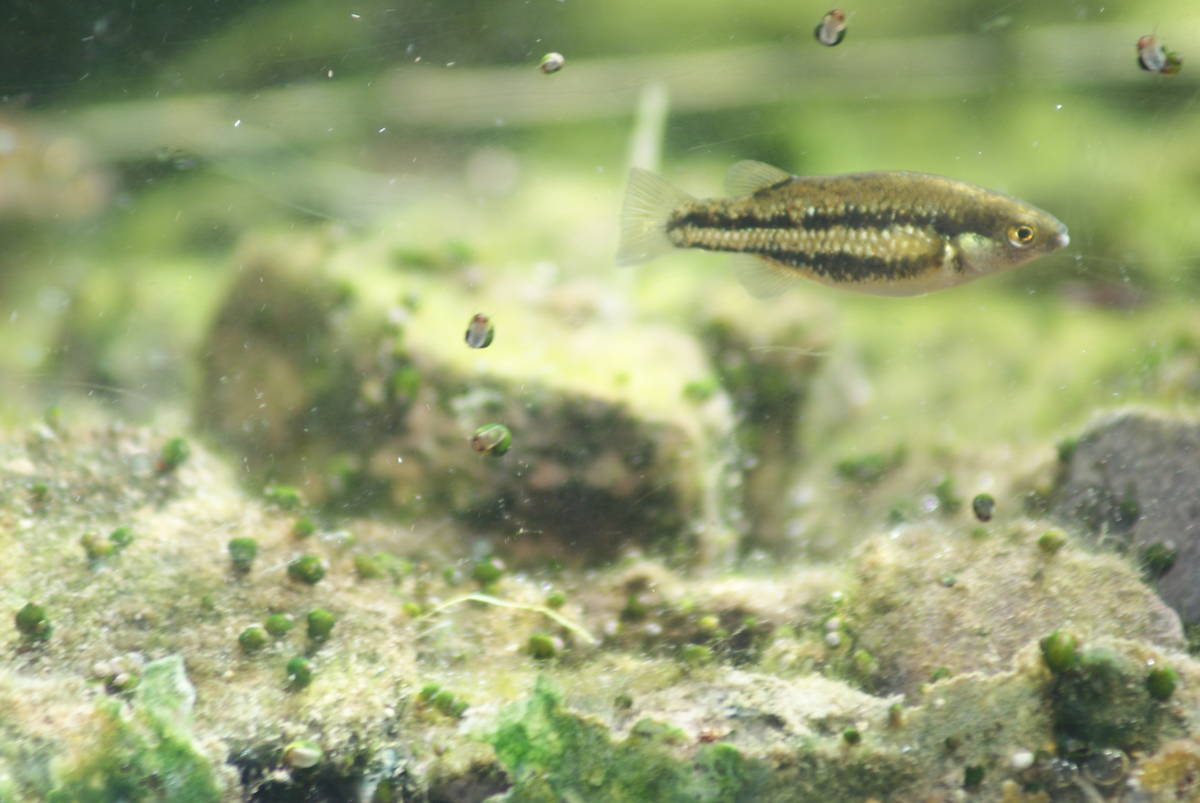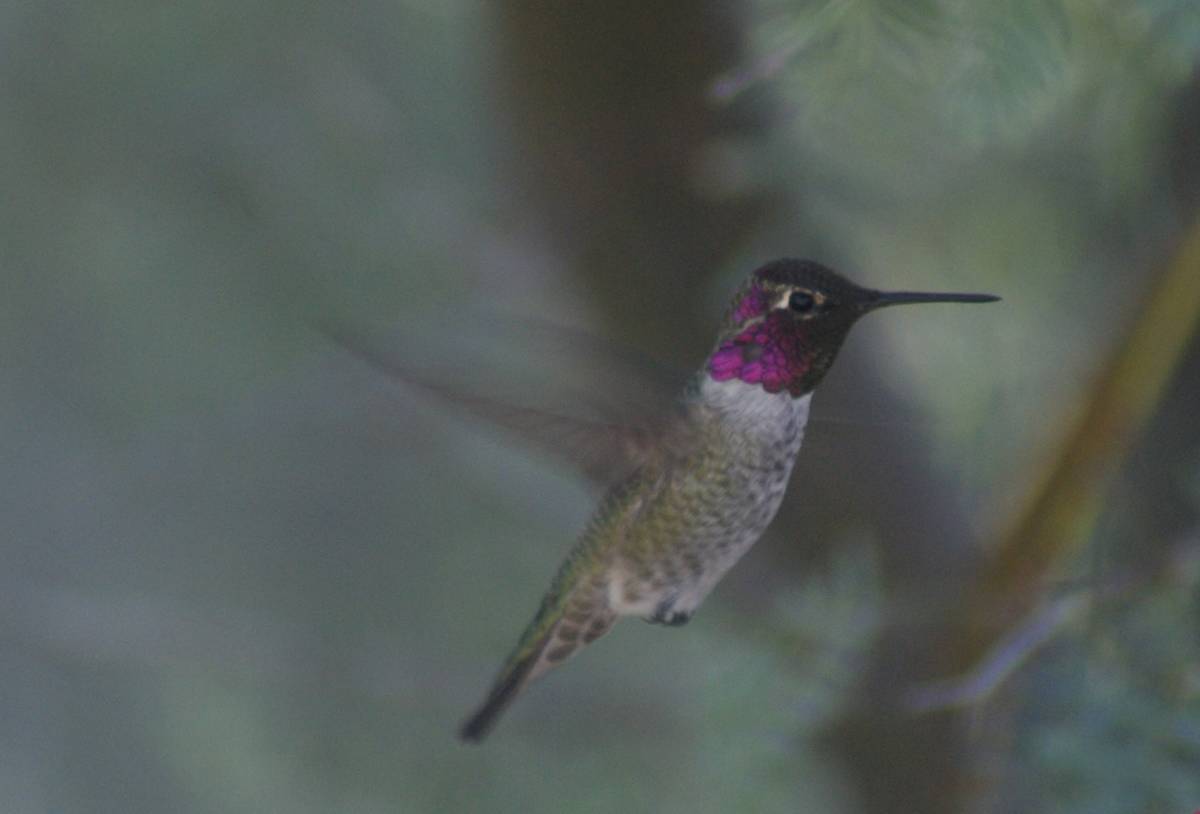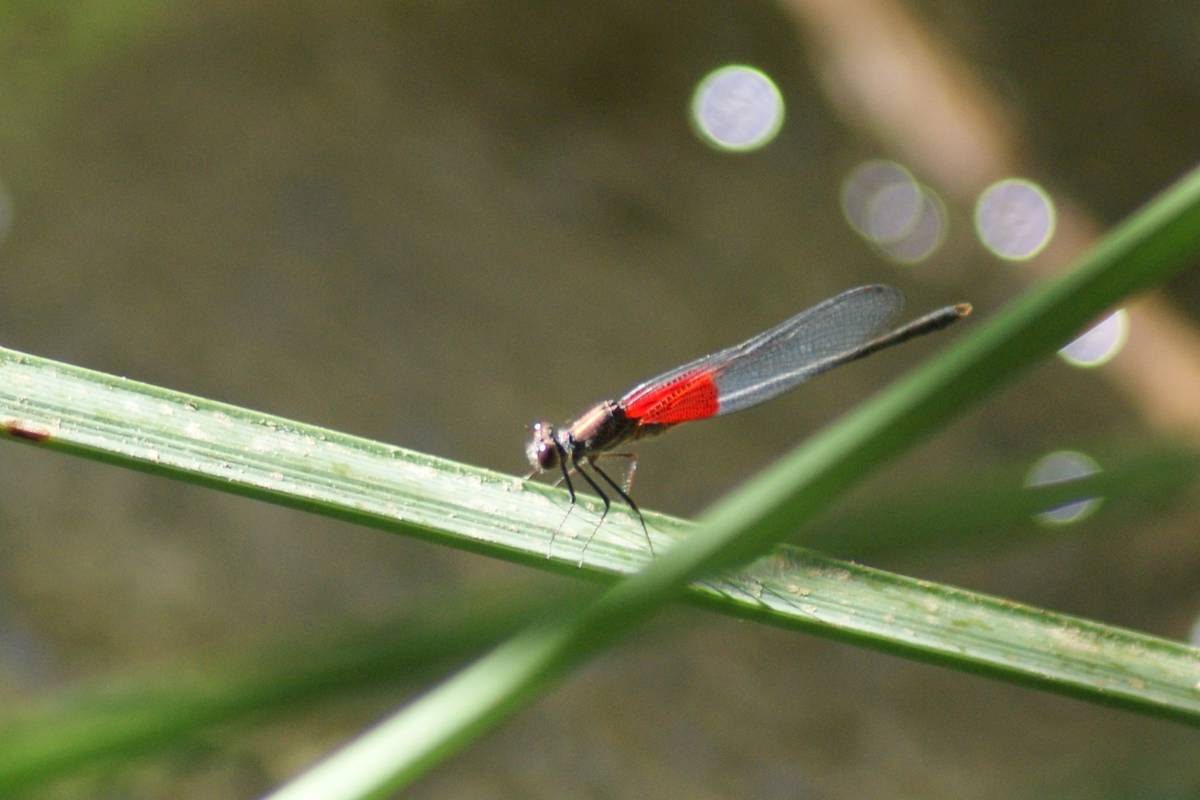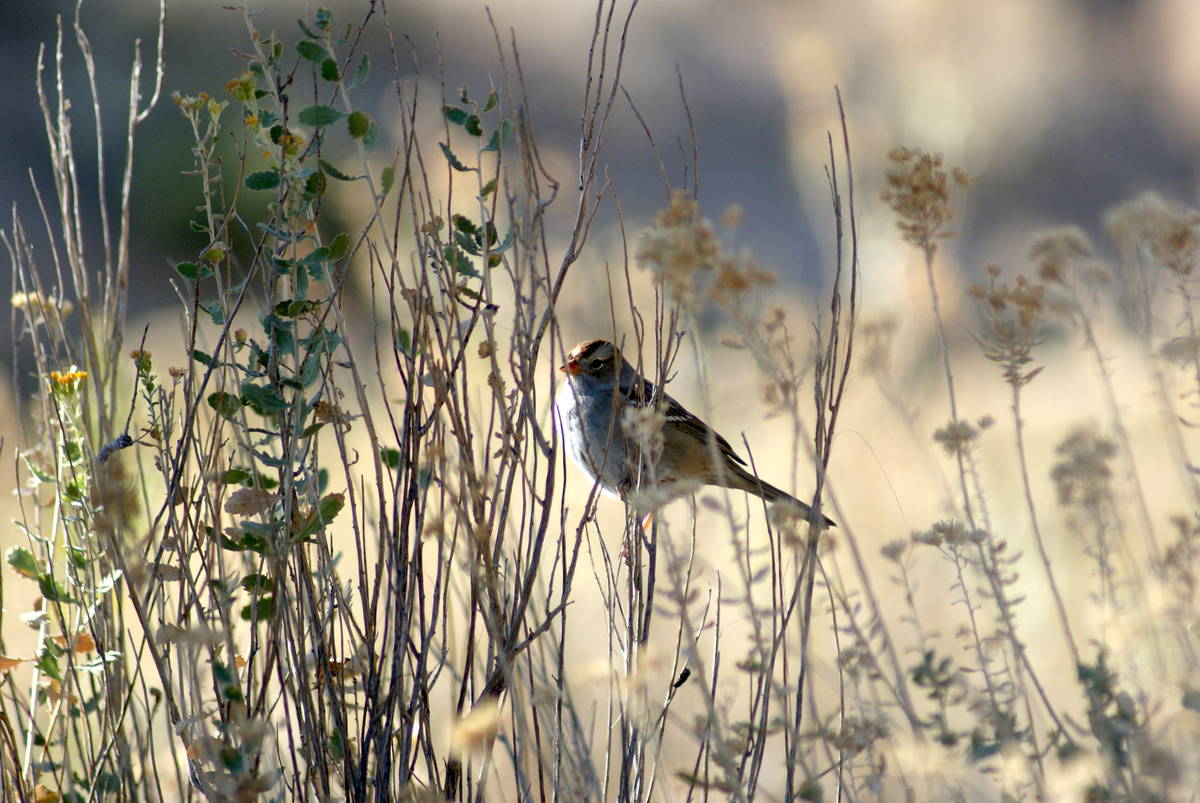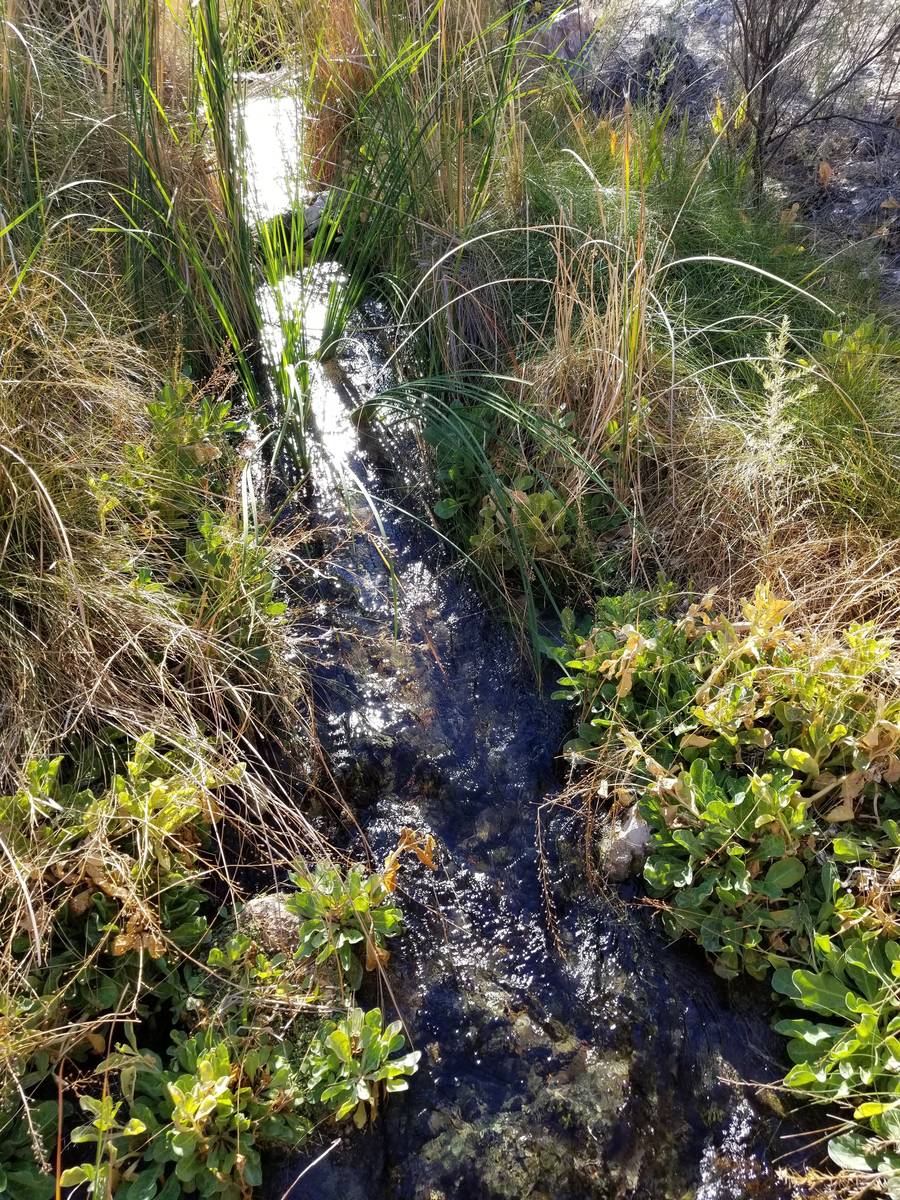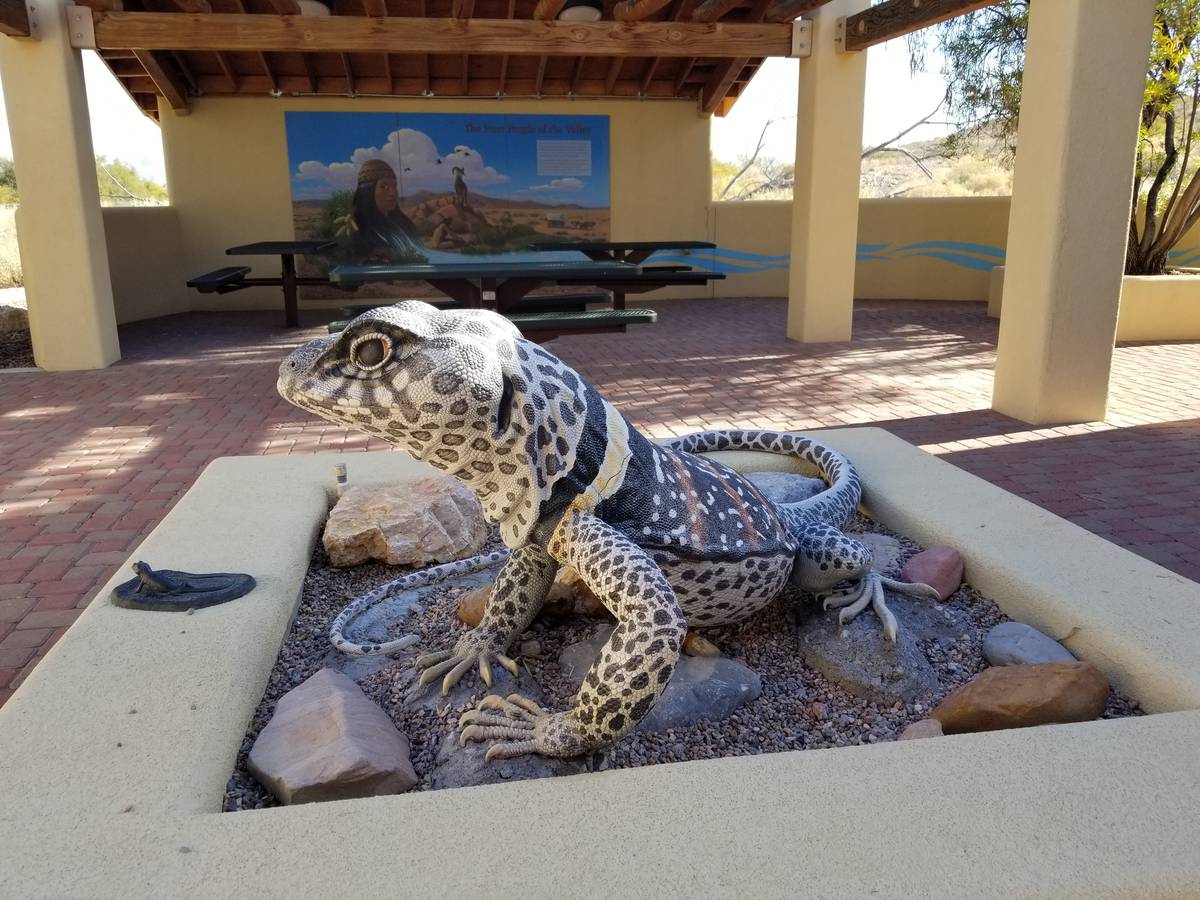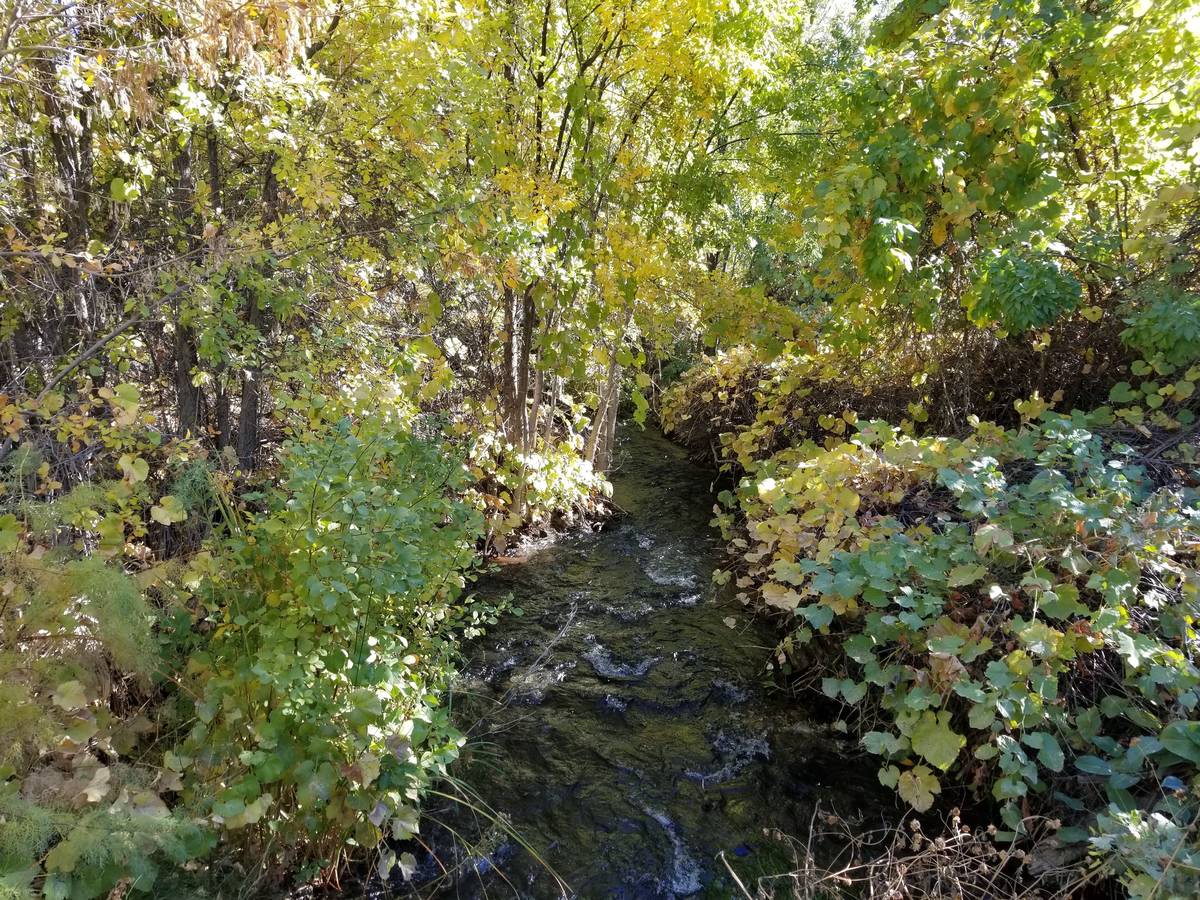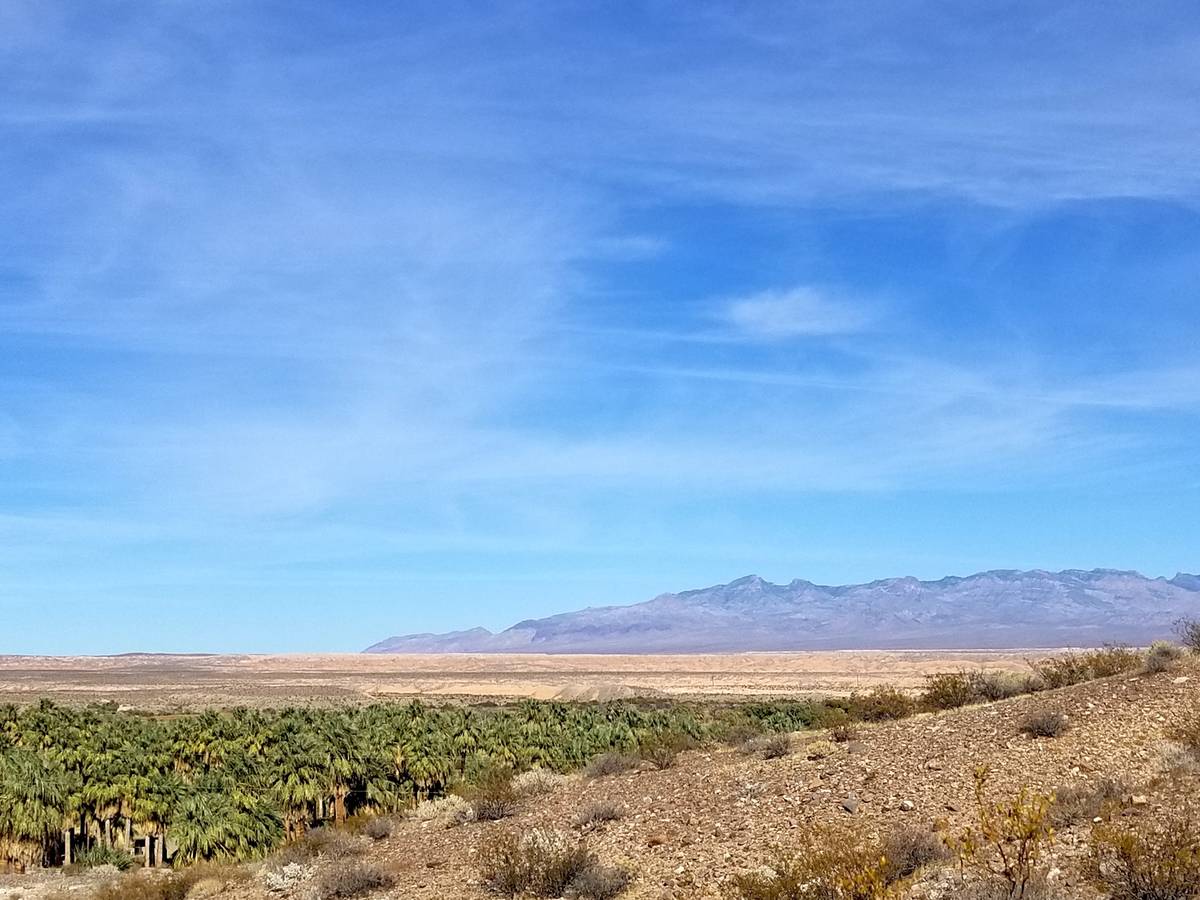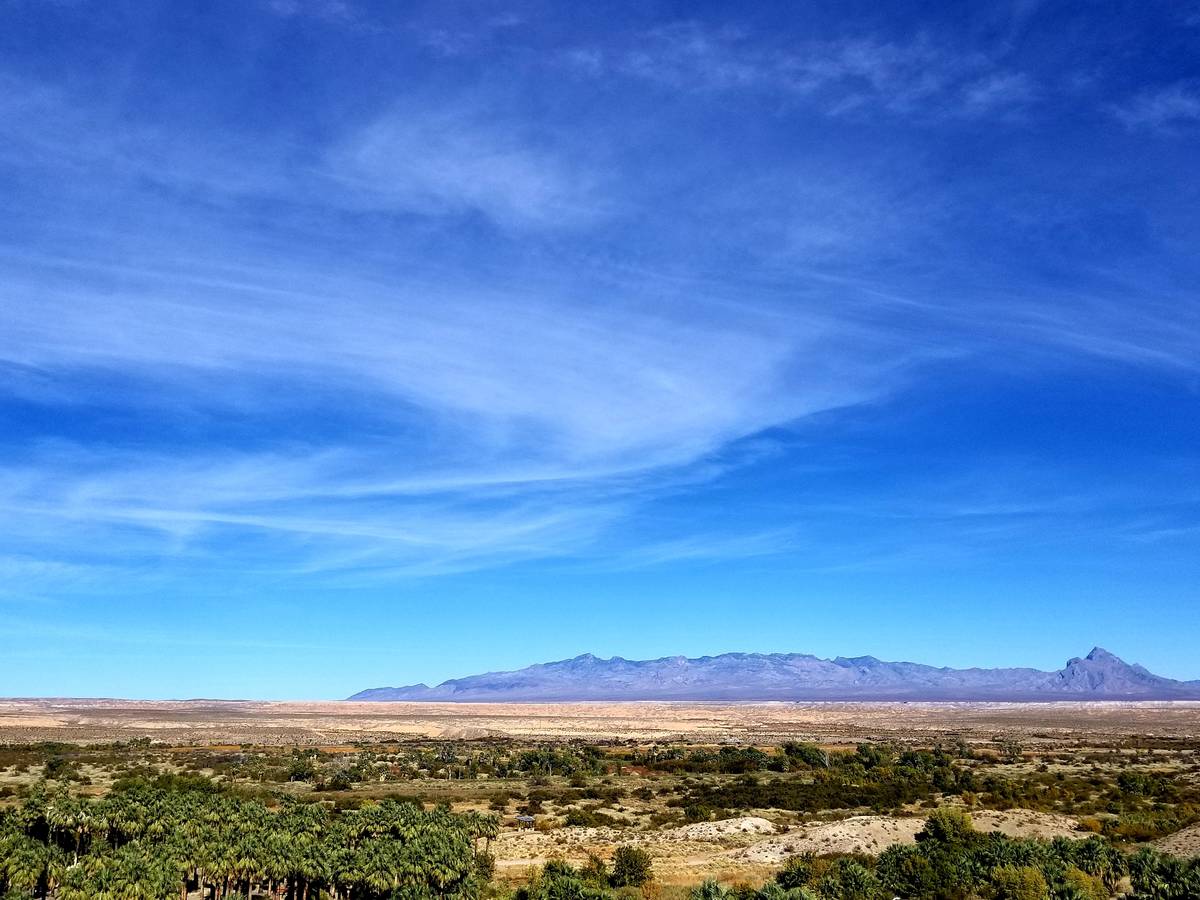Moapa Valley a tranquil oasis in the desert
A tiny golden fish reeled me into visiting a Mojave Desert oasis.
Just an hour north of Las Vegas, the twin attractions of Moapa Valley National Wildlife Refuge and Warm Springs Natural Area offer big-sky tranquility and a field-based opportunity to learn about the Moapa dace and its remarkable habitat.
Spotting the federally endangered finger-length fish turned out to be simple, thanks to thick panels of aquarium glass that are part of a stream viewing window engineered at the refuge to allow for easy fish-peeping while helping to direct nature’s intended flow of thermal spring waters that help form the Muddy River. Much like glass-bottom boats that provide windows to coral reefs, this setup offers eye-level peeks into the Moapa dace’s living room, which is shared by White River springfish, minuscule Moapa pebble snails, a couple of beetle species found nowhere else on Earth and plenty of rocks and algae. The critters all have freedom of movement as the open-air display does not confine them to tanks.
The silvery and striped White River springfish are more abundant in the refuge’s outdoor display, but gaze into the 90-degree spring waters long enough, and it’s very likely you’ll spot the thinner olive-golden fish with a black dot at the base of its tail. That’s the Moapa dace, endemic to the headwaters of the Muddy River.
At last count in August, the Moapa dace population had climbed to 2,342, up from 1,317 the previous year and up from a few hundred in 1977. The fish has been under Endangered Species Act protection since 1967, when it became clear that concrete channeling of its habitat, chlorine, pool parties and introduced fish species at once-popular, now-vanished resorts were combining to bring the Moapa dace to the brink of extinction.
While there remain places in the upper Moapa Valley where people can still take a dip in the area’s warm waters, the refuge since 1979 has secured two major springs and headwaters of the Muddy River for the Moapa dace. Additionally, spring-fed streams not far from the headwaters and across Warm Springs Road from the refuge now continue that protective cover on 1,200 acres maintained by the Southern Nevada Water Authority.
The refuge and the Warm Springs Natural Area offer visitors information, illustrations and photos on panels and kiosks about wildlife and plants, the Muddy River system, ecology, Paiute history, farming and colorful chapters of the area. In the 1960s and ’70s, the area was a big draw for Las Vegas day trippers with its swimming pools, slides, bath houses and snack bars. Now the only thing close to resort living near the Muddy River headwaters is the picnic areas that visitors use for packed lunches.
While the pool party vibe has faded, there’s plenty of opportunity for peaceful wandering and for hill climbing to gain panoramic perspectives of the Moapa Valley at both places. The refuge’s Outlook Trail offers a red-tailed hawk’s look at the distant Mormon Mountains and an overview of the neighboring Warm Springs Natural Area.
Planted decades ago for their shade value, thirsty palm trees remain a distinctive feature of Warm Springs Natural Area. That nonnative greenery is a reminder that the place is an oasis in North America’s driest desert.
The naturally occurring evidence of a Mojave Desert oasis is discovered along well-maintained paths that parallel spring-fed streams that help feed the 32-mile-long Muddy River, which flows into Lake Mead. Fish and aquatic plants can be spotted in the clear thermal waters. Wild grape vines, willows and velvet ash add cover and shade in the riparian area. Damselflies balance on reeds over water that help birds and mammals defy the odds of desert survival.
A trail system also meanders through mesquite woodland, where desert cottontails hop and hide while Loggerhead shrikes (one of the area’s more than 200 birds species) perch and search for meals. Remnants of human history are also on display at Warm Springs Natural Area, including a large antique scale for weighing cattle and a water wheel generator that once helped power ranch life.
The last lingering stop before ending my first Warm Springs visit was along a boardwalk circling a natural pool where spring water bubbled up through dirt and silt from some hidden source underground. Gently swirling water and shiny flashes from darting fish mixed with strands of aquatic plant greenery. Slivers of silver light slipped through palm fronds. Tranquility is abundant near the only spot in the world where the Moapa dace swims.
Visitor information
The Moapa Valley National Wildlife Refuge is open Fridays to Sundays, and the Warm Springs Natural Area is open Tuesdays to Sundays. Check the websites for holiday hours as well as for potential restrictions during the coronavirus pandemic.
Reach both by traveling north on Interstate 15 and taking Moapa/Glendale exit 90. Travel west on state Route 168 until reaching Warm Springs Road. Turn left and drive about 1½ more miles. Both destinations are closed to the public in June, July and August.
U.S. Fish and Wildlife Service: fws.gov/refuge/moapa_valley
Southern Nevada Water Authority: warmspringsnv.org




